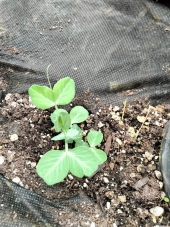Jack Edmondson wrote: What I was not able to find was a scientific paper that talked about the PROCESS of pyrolysis breaking down the chains.
To get you started:
https://upload.wikimedia.org/wikipedia/commons/8/81/Processes_in_the_thermal_degredation_of_organic_matter.svg
So, when you light something on fire, there's a bunch of chemical mechanisms happening that are driven by application of HEAT and whether or not there is an OXIDIZER present.
Evaporation/Vapourization is entirely driven by heat. When matter is heated enough, the bonds between the molocules (and eventually the atoms, hello Magma) wiggle free and turn it into a liquid - and then a gas. They float away on the wind.
Oxidation is when oxygen can attach to the molecule & alter it. Oxidation is a big driver of decay, even within our body. "Antioxidants" are important in our diet because it fights off oxidation of our essential molecules and cellular structures. This is the same for any organic matter. If you apply enough oxygen & heat, then not only will the molecules/atoms become wigglier, but oxygen is able to attach to it easier.
When a house burns down, aside from the heat itself, the airborne evaporated vapours and the gaseous oxidized chemicals are the most deadly and cancerous things a firefighter can expose themselves to.
MOST organic molecules will break down or vapourize at the temperatures required to create Charcoal from organic matter.
Salts and Minerals will take a higher heat, OR will require the application of an alkelai or an acid + heat to chemically react with it & change the bonds. (Vinegar or Lye)
Acids & Alkelis are harder to apply to material in-bulk, but they can be made organically (Vinegar from fermented fruits, Lye from hardwood ash boiled with rainwater).
The long-lasting herbicides you're worried about are probably only long-lasting in
normal outdoor conditions. Applying heat, or heat + big pH change should be able to do the trick. If you give me some names, I might be able to help you track down more specific info.
I do know that glyphosate, Roundup's key ingredient, is violate when exposed to heat & would readily break down if you charred it.
Other salts, like Aminocyclopyrachlor Potassium Salt, I have to look up.
It looks like it isn't reactive enough to degrade completely in a hot-compost pile, though those generally only get up to 105-115 degrees F. Charring temperatures greatly exceeds that.
According to the safety data sheet for Aminocyclopyrachlor, when it's on fire firefighters are advised to NOT spray it with a water jet as it will spread the fire. This tells me that, at high temperatures, the chemical becomes reactive to water.
http://cdn.chemservice.com/product/msdsnew/External/English/N-13826%20English%20SDS%20US.pdf
The 'Initial boiling point and boiling range' is set at 810 degrees F.
Charcoal is formed at around 750 degrees F, upward of 900 degrees. Past 1,000 degrees F, the char itself can ignite.
The Safety Data Sheet also shows under 'Incompatible Materials', Strong Oxidizing Agents are listed.
One example of a strong oxidizing agent is hydrogen peroxide.
---
Summary:
Check the Safety Data Sheet of each of those herbicides. They should have things like boiling point (the temp where evaporation/vaporization occurs) and materials that could possibly react violently or significantly degrade the chemical's efficacy.
It also lists if it's explosive, and if the vapors or skin contact is harmful.
You'd be able to get rid of Aminocyclopyrachlor specifically using charring-levels of heat, BUT you'd have to remain VERY FAR AWAY from that fire, because the vapors are going to be toxic as
hell.
You could also try dousing it with BULK amounts of hydrogen peroxide, OR dump the soil into a huge tank of water & run an electric current through it to promote rapid oxidation.
I haven't crunched the numbers to see what chemicals you'd get off those reactions, so I don't really recommend them.
In conclusion: Yes, charring the cow patties properly should create herbicide-free char.
HOWEVER!!! Do not breathe in the smoke or vapors, and thoroughly wash yourself with soap after exposure to the smoke/vapors if you have serious concerns about herbicide being present.

 5
5




 6
6




 4
4




 4
4




 5
5




 7
7




 10
10




 2
2




 3
3







 1
1











